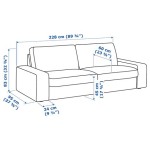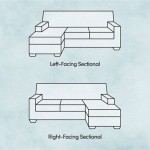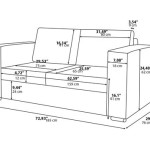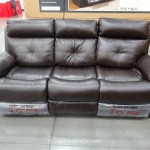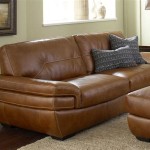How To Fix Leather Sofa Cushions
Leather sofas are a luxurious addition to any home, providing comfort and style. However, over time, the cushions can lose their shape, firmness, and overall appeal. Addressing these issues promptly can prolong the lifespan of the sofa and maintain its aesthetic value. This article provides a comprehensive guide on how to fix common leather sofa cushion problems.
Assessing the Cushion Problem
Before attempting any repairs, it's crucial to identify the root cause of the issue. Different problems require different solutions. Common cushion problems include:
- Loss of firmness/flattened cushions
- Lumps or uneven filling
- Sagging or dipping
- Torn or ripped seams
Addressing Flattened Cushions
Flattened cushions are often due to compressed filling. Several methods can restore their plumpness:
- Fluffing and Repositioning: Regularly fluffing the cushions helps redistribute the filling and maintain their shape.
- Adding Filling: If fluffing isn't sufficient, adding new filling material can restore the cushion’s loft. Polyester fiberfill, foam, or down feathers are common choices.
- Replacing the Filling Entirely: For severely compressed cushions, replacing the entire filling may be the most effective solution.
Fixing Lumps or Uneven Filling
Lumps or uneven filling can result from shifting internal materials or broken-down foam. Here’s how to rectify these issues:
- Massage and Redistribute Filling: Gently massage the cushions to break up lumps and redistribute the filling evenly.
- Remove and Re-arrange Filling (if accessible): If the cushion cover has a zipper, open it and manually rearrange the filling, removing any large clumps or broken pieces of foam.
- Add or Replace Filling: Supplement with new filling material to even out inconsistencies or replace damaged filling entirely.
Repairing Sagging or Dipping Cushions
Sagging cushions often indicate a problem with the support structure beneath the cushions. Addressing this may involve:
- Checking the Support System: Inspect the sofa frame and springs for damage or weakness. Repair or replace any broken components.
- Adding Support: Placing a firm board or plywood sheet underneath the cushions can provide additional support and prevent further sagging.
- Reinforcing the Cushions: Adding a layer of high-density foam to the bottom of the cushions can provide added support and improve their shape.
Mending Torn or Ripped Seams
Torn seams can lead to further damage and loss of filling. Prompt repair is essential:
- Sewing the Seam: If the tear is small and accessible, it can be sewn closed using a heavy-duty needle and thread matching the cushion cover.
- Patching the Tear: For larger tears, a patch can be applied to the inside of the cushion cover. Choose a durable fabric that matches the cushion material.
- Replacing the Cushion Cover: For extensive damage or if the cover is severely worn, replacing the entire cushion cover may be the best option.
Choosing the Right Filling Material
Choosing the correct filling material is crucial for achieving the desired comfort and support. Consider the following factors:
- Density: High-density foam provides firm support, while low-density foam offers a softer feel.
- Resilience: High-resilience foam retains its shape better over time.
- Allergies: If allergies are a concern, opt for hypoallergenic filling materials like polyester fiberfill.
Maintaining Leather Sofa Cushions
Regular maintenance can prevent future cushion problems and extend the lifespan of the sofa. Key maintenance practices include:
- Regular Fluffing: Fluff cushions regularly to redistribute the filling and prevent flattening.
- Rotating Cushions: Rotating cushions periodically ensures even wear and tear.
- Cleaning and Conditioning the Leather: Follow the manufacturer’s instructions for cleaning and conditioning the leather to keep it supple and prevent cracking.
- Protecting from Sunlight: Avoid placing the sofa in direct sunlight, which can fade the leather and damage the cushions.
Professional Upholstery Services
For complex repairs or if you're uncomfortable tackling the repair yourself, consider consulting a professional upholstery service. They have the expertise and tools to handle a wide range of cushion repairs and restorations.

Easy Leather Couch Repair

How To Repair A Leather Sofa Cushion With Glue Bostik

Sofa Cushion Replacement

How To Fix A Sagging Couch Sofa Quick And Easy

Tutorial Diy Upholstery Sofa Rehab A Jennuine Life

How To Fix Bonded Leather Ling

How To Fix Sagging Couch Cushions Thistlewood Farm

A Quick And Easy To Plump Up Your Sofa Cushions Leather Care In Honor Of Design

4 Ways To Fix Sagging Sofa Cushions Wikihow

How To Repair Leather Furniture


